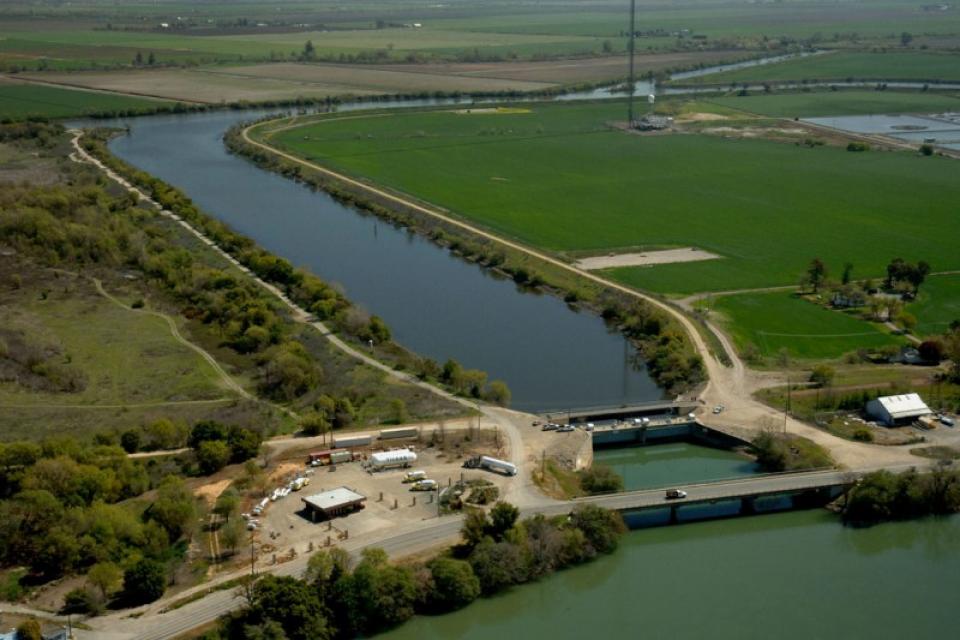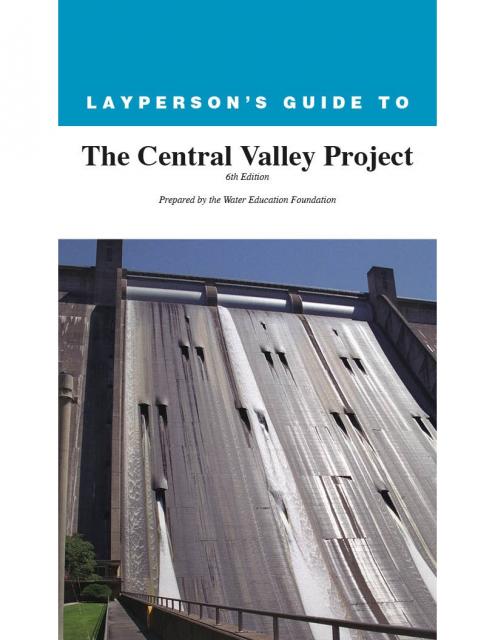Central Valley Project Improvement Act
The Central Valley Project Improvement Act supports a major federal effort to store and transport water in California’s Central Valley.
The 1992 Act changed operations of Central Valley Project; a major project that addresses flooding, storage and irrigation issues in the valley [see also Central Valley Project].
In years of normal precipitation, the CVP stores and distributes about 20 percent of the state’s developed water —about 7 million acre-feet—through its massive system of reservoirs and canals. But this major redistribution of water has not occurred without conflict. Throughout its history, the CVP has been mired in controversy, including concerns about the project’s public costs and private benefits. Even as it has helped California achieve its status as a leading farm state, critics contend the CVP has contributed to the decline of anadromous fish species, and caused other environmental damage.
Years of discussion of subsidies, acreage limitation issues, and loss of habitat culminated in the passage of the Central Valley Project Improvement Act in 1992. The CVPIA allowed changes in water policies, pricing and distribution. It also mandated balancing competing demands for a limited supply of water, a balance that included meeting the requirements of fish and wildlife; agriculture; and municipal, industrial and power contractors.
CVPIA Components
The CVPIA has several components including:
- addressing environmental needs in the Central Valley and Trinity River basins of California;
- assessing impacts of the CVP on fish, wildlife and associated habitats;
- expanding the operational flexibility of the CVP;
- increasing voluntary water transfers and improving water conservation;
- and further contributing to efforts to protect the Sacramento San Joaquin Delta and San Francisco Bay.
One of the most ambitious components of the CVPIA is its Anadromous Fish Restoration Program, which aims to double the natural production of fish that migrate between fresh water and salt water. The ongoing goal is to double the numbers of salmon, steelhead, striped bass, American shad, white sturgeon and green sturgeon (doubling those populations from their average levels from the years 1967-1991). Similarly, the CVPIA mandates efforts to restore wetlands and riparian (riverside) habitat.
CVPIA and Habitat
Under the CVPIA, water supplies increased for 19 state, federal and privately owned wildlife refuges in the Central Valley. These refuges provide critical managed wetland habitat for a variety of wildlife, such as snow geese, northern pintail, white-faced ibis, snowy egret, sandhill cranes and the giant-garter snake. In all, the reliable source of water has continued to support more than 100 bird species.
However, five of the 19 refuges still lacked the adequate infrastructure necessary to convey all the water mandated by CVPIA as of late 2009. It was estimated another 159,000 acre-feet of permanent water supply per year would be needed to optimally manage the wildlife habitat. So far, numerous biological benefits have resulted from a reliable year-round water supply through CVPIA that meets the delivery schedule for wetland management. Habitat is now available during August and early September and benefits early migrant waterfowl and shorebirds.
Habitat also is provided for resident wildlife and their young during a critical time of the year when wetland habitat can be particularly limited by hydrology. The effort to save the winter-run Chinook salmon, in combination with the CVPIA, brought fundamental change to CVP facilities and operations. New, state-of-the-art fish screens were installed at Red Bluff Diversion Dam on the Sacramento River. The dam’s gates are now permanently raised to allow salmon free passage.
In the Delta, gates at the Delta Cross Channel also are closed for several months to reduce fish entrainment at the export pumps. As for human water users, the CVPIA established tiered pricing to be paid by agricultural interests. For all CVP contractors —as well as for water users throughout the West—the ongoing battles over water, and specifically the condition of the Delta, brings with it uncertainty about future water costs and supplies.
In wet years most agree that there is enough CVP water for contractors and to meet the CVPIA’s environmental requirements. In dry years, on the other hand, certain CVP irrigators have experienced significant delivery cuts and they say the Act has disproportionate impacts even in years of normal precipitation. Some have offset these cuts through increased groundwater use and water transfers.










